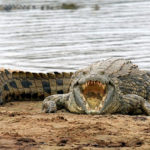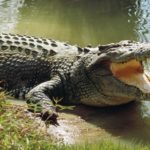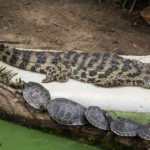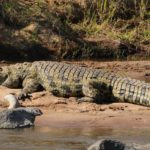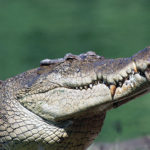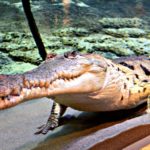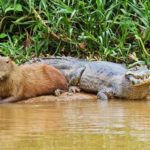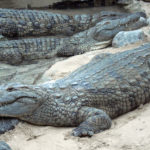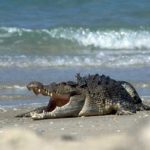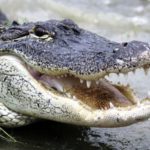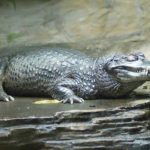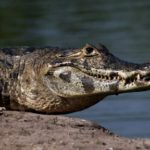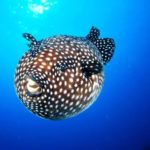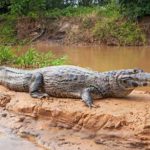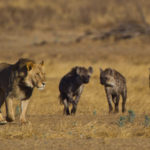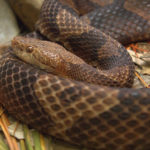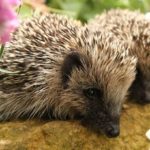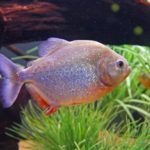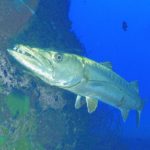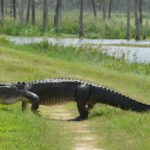Ganges Gavial
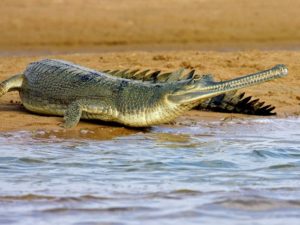 Gavial is a special kind of crocodile, a direct descendant of ancient reptiles. The Ganges gavial has significant differences from all other crocodiles. First of all, this is his appearance. A long narrow muzzle, preserved from the ancestors, whose jaws are dotted with teeth that are rare and sharp as needles.
Gavial is a special kind of crocodile, a direct descendant of ancient reptiles. The Ganges gavial has significant differences from all other crocodiles. First of all, this is his appearance. A long narrow muzzle, preserved from the ancestors, whose jaws are dotted with teeth that are rare and sharp as needles.
Most of the time the gavial spends in the water and eats fish, and his habits are more reminiscent of the behavior of predatory fish. In relation to other living beings, he is less aggressive.
Gavial – an unusual crocodile. According to the research of scientists, as it looks now, it has existed for several million years, and only in those places where the conditions of its existence have not changed almost all this time: a warm, humid climate and fresh water. The habitat of the Ganges gavial is South Asia, the basin of the Ganges River and its tributaries, in India and Nepal. This crocodile received the name Ganges due to the name of the most famous river in India. A few decades ago, the habitat of the Ghanaian gavial was much wider, but in recent years their number has decreased significantly and now there are no more than 2000 of them.
On the earth from ancient times, only a few species of animals have survived, and even those numerous floods, the ice age and other cataclysms have significantly altered. The prehistoric animals that existed millions of years ago, in the course of evolutionary transformations, adapting to new conditions, changed their appearance. However, the general features of the appearance and structure of the organism are preserved to a certain extent. One of these surviving, in a slightly modified form, is the Ganges gavial. It is believed that gaviales, as a separate species, exist on the earth for more than 50 million years. So, by longevity, the gavials are almost the same age as dinosaurs and direct descendants of ancient crocodiles. According to the existing classification of the animal world, the gaviales belong to the reptile class, the crocodile detachment, and to the separate gavial family, representatives of the genus and species of which they are singular.
Outwardly, the gavial is similar to an ordinary crocodile. However, if a crocodile can be considered a land animal adapted for life on land, the gavial is more likely an aquatic animal adapted for existence on earth. Therefore, the gavial is dominated by water features. He has the same, like a crocodile, large elongated body on short legs, covered with ossified plates. On the back, the plates are larger, looking like a shell. On the sides and on the stomach, the plates are pressed together like fish scales, which prevents the gavial from being damaged by sharp stones both in water and on land, especially since they cannot lift their bodies on the ground and move only by crawling. This is his special defense, which appeared with a predominant dwelling in the water. On the tail, the plates turned into outgrowths of a triangular shape. In many gavials, almost all the time in water, the skin is covered with epibiotic crustaceans, which they seem to not interfere much with. The color of the body of the gavials is not the same. The back is darker sometimes brownish-green, the belly is yellowish-green. There are gavials of light green color, sometimes brown in different shades, rarely black and almost white.
